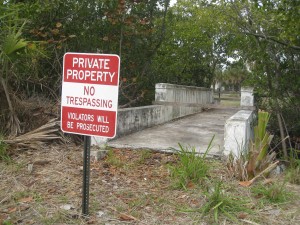 Salt Creek, the wild underbelly of St. Petersburg, flows southwest. It mirrors Thoreau’s walking pattern and America’s patriotic vision of wilderness but this creek proves you don’t have to go west to journey through nature. Or danger. Lake Maggiore, once at the end of Salt Creek and known as Salt Lake before it was dammed, is Walden Pond beside I-275. It’s part of the Florida Bird Trail with great blue and tricolored heron, ibis, anhinga and egrets galore smack in the middle of the city. It’s where my ‘mind and nature meet,’ unmolested by the din of civilization. I come here for the quiet, like the moorhen.
Salt Creek, the wild underbelly of St. Petersburg, flows southwest. It mirrors Thoreau’s walking pattern and America’s patriotic vision of wilderness but this creek proves you don’t have to go west to journey through nature. Or danger. Lake Maggiore, once at the end of Salt Creek and known as Salt Lake before it was dammed, is Walden Pond beside I-275. It’s part of the Florida Bird Trail with great blue and tricolored heron, ibis, anhinga and egrets galore smack in the middle of the city. It’s where my ‘mind and nature meet,’ unmolested by the din of civilization. I come here for the quiet, like the moorhen.
Not especially chic or beautiful, Salt Creek is an overlooked connector between our two bays, Tampa and Boca Ciega. Visions of beautification and industrial profit once ran along with the tide while the tangled edges pass by the fringe of our society and the poorest urban parts of southeast St. Petersburg. When industry left, the heron and children were still here. The kids call it their ‘hood and step carefully. I see their sweatshirts, those famous hoodies, pulled up tight over their heads and eyes. These kids are mostly, though not all, black, and like to stay hidden inside those hoods. Their eyes peek furtively at me from deep inside to see if I’ll cause trouble.
Wearing a sweatshirt in Florida can cause deadly trouble. On February 26, 2012, Trayvon Martin was visiting his father in Sanford, Florida. He pulled up his hoodie to walk home from a convenience store in the rain. He was followed through the gated community, shot, and killed by George Zimmerman, a community watchdog. Florida’s controversial Stand Your Ground law makes it possible to shoot anyone you deem malevolent. Trayvon was unarmed. He was just seventeen, ‘walking while being black.’
What I’m struck by, as I kayak along the creek, are the night heron who sit quietly hidden inside the mangroves. Like the neighborhood boys they see me before I see them. The wading birds sit tight, adjusted to city life. Their heads are tucked in as they wait for nightfall to approach; at dusk they stir and come out of their hiding places. Their darker blue-grey bodies mimic the black clothes of the urban jungle; their bright kohl-rimmed eyes and brilliant yellow hoods mark them as exotic. The way they lurk and peer at me make them look dangerous. We tense when I come close, and again, I’m reminded of the boys who don’t want trouble.
The boundaries that surround Salt Creek are more economic, more mental and social than physical. Like its kids, Salt Creek is gritty and authentic, maybe the last authentic piece of St. Petersburg. Those boys in their sweatshirts can walk two blocks and reach a university but two blocks are thousands of dollars off their grid and not so easy to navigate. They’re hemmed in by more than gated communities and chain link fences because poverty is self-perpetuating, just like wealth. Few aspire to a college education or can afford one. Lots of these children look out on the world tensed for blowback. Exotic to some, they know their boundaries are different. They are neighbors of mine just like the night heron.